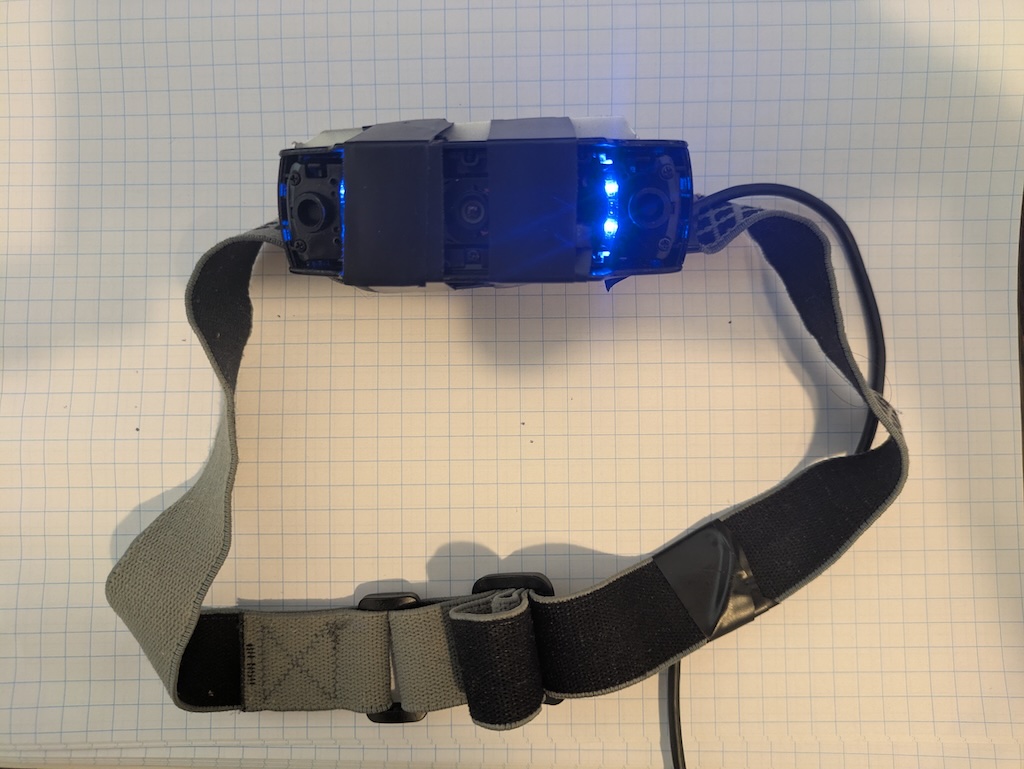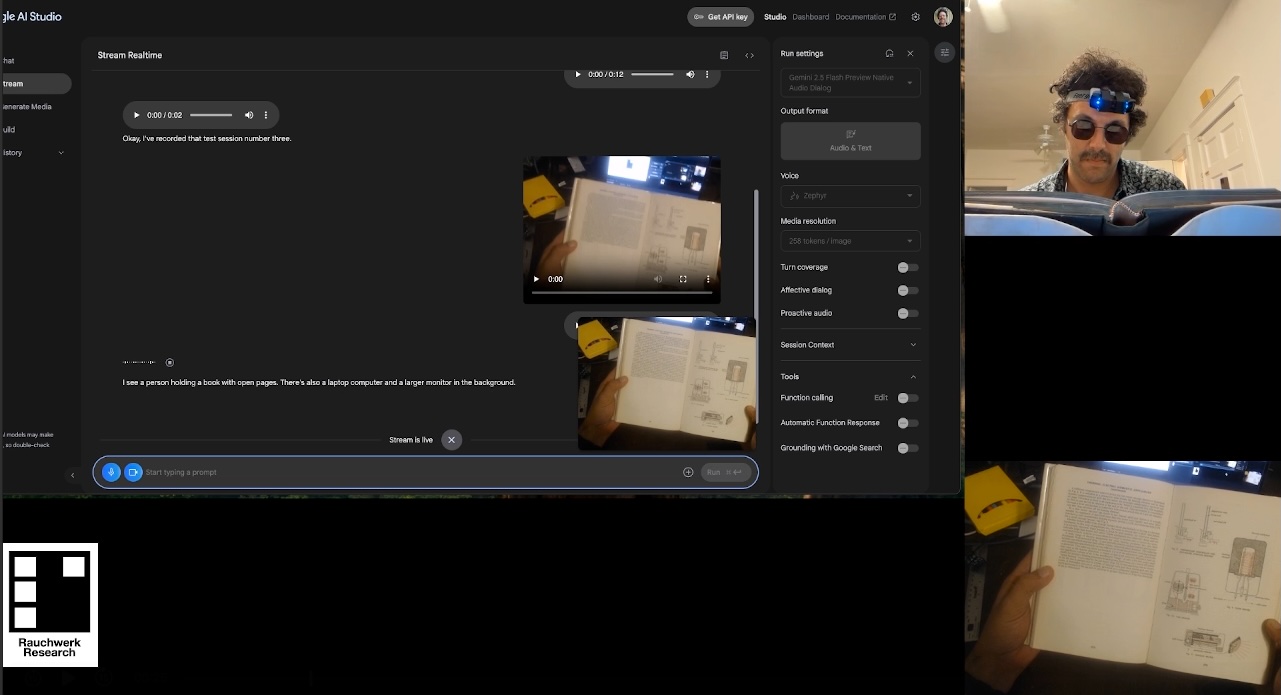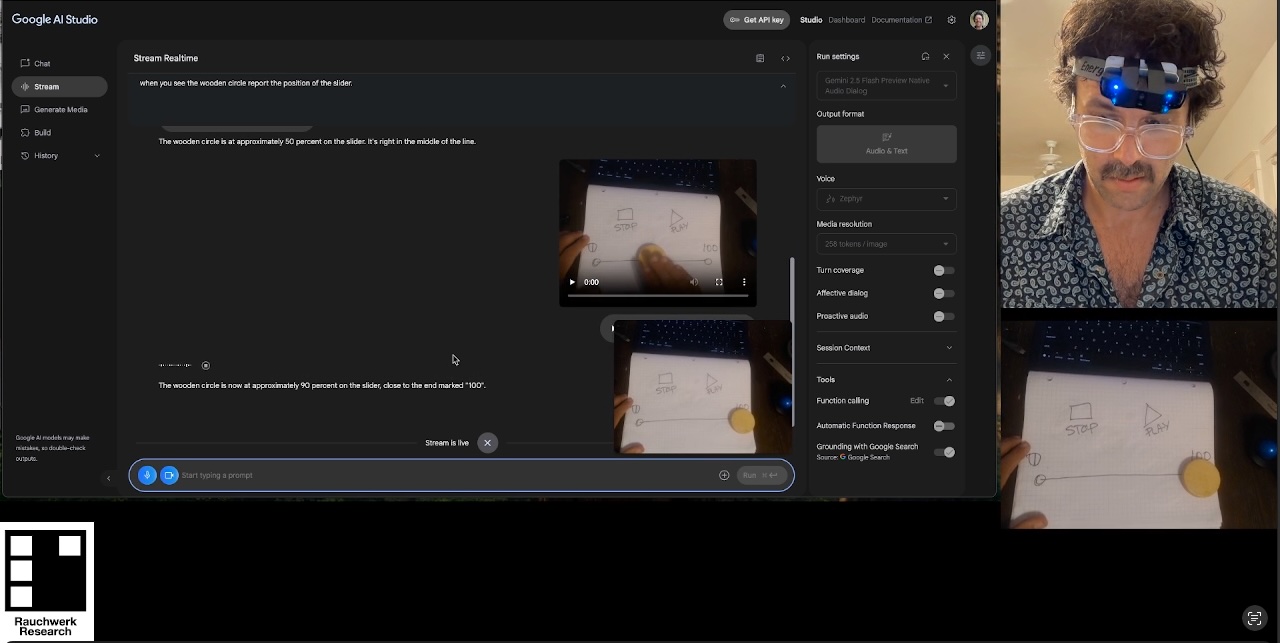As We May Think Sessions - Cyclops Camera



Project Overview
Inspired by Vannevar Bush's "As We May Think" article and the new capabilities of real-time multimodal models, this project involved mounting a Logitech C920 camera on a headlamp strap to create a "Cyclops camera" for collaborative human-machine reading experiences.
Key Innovations
• Head-mounted camera providing first-person perspective to AI
• Real-time bidirectional dialogue with very low latency
• Interactive tangible interfaces (wooden slider with graph paper)
• True real-time response - AI responds before actions complete
• Zero-trigger interaction model
Technical Implementation
The system used a modified Logitech C920 camera attached to an Energizer headlamp strap, connected to Google AI Studio running Gemini 2.5 Pro with native audio. The setup enabled real-time visual processing and conversation, allowing the AI to see exactly what the user sees and respond immediately.
Experimental Results
Successfully demonstrated real-time multimodal interaction including:
• Reading and discussing "How Things Work" book in real-time
• Interactive control of a constructed slider interface
• Button pressing and real-time feedback
• Pre-emptive AI responses to incomplete actions
Future Vision
This prototype opens discussions about using multimodal streaming large language models for fundamentally new types of interfaces - more convivial interactions that go beyond traditional "fingers on glass" paradigms. The work suggests opportunities for reimagining human-computer interaction through frontier AI models.
Publication
Results documented in Rauchwerk Research Substack post exploring collaborative human-machine reading and the potential for new tangible interfaces.
 Rauchwerk Research
Rauchwerk Research